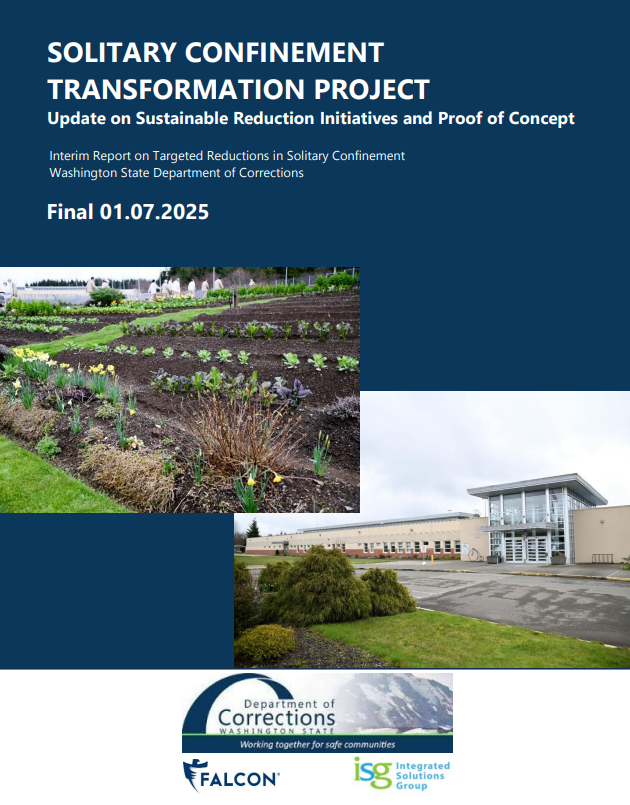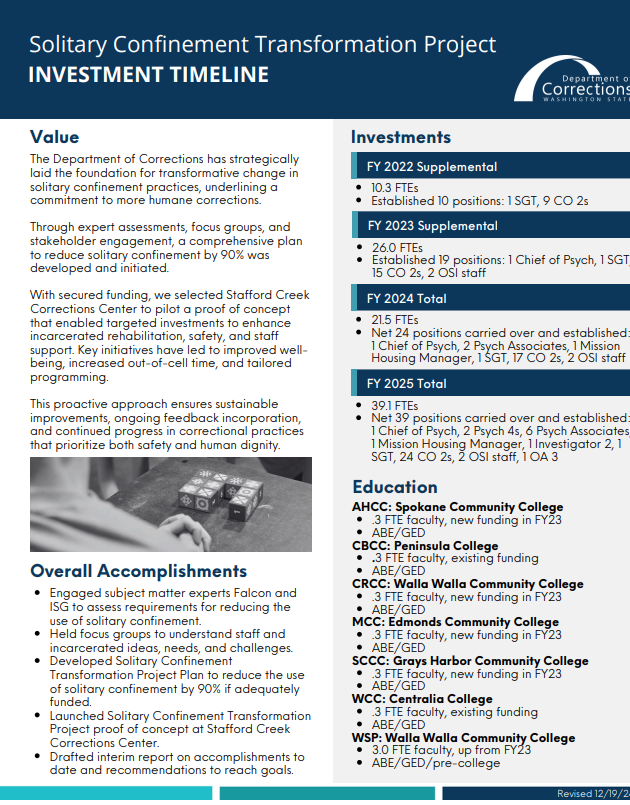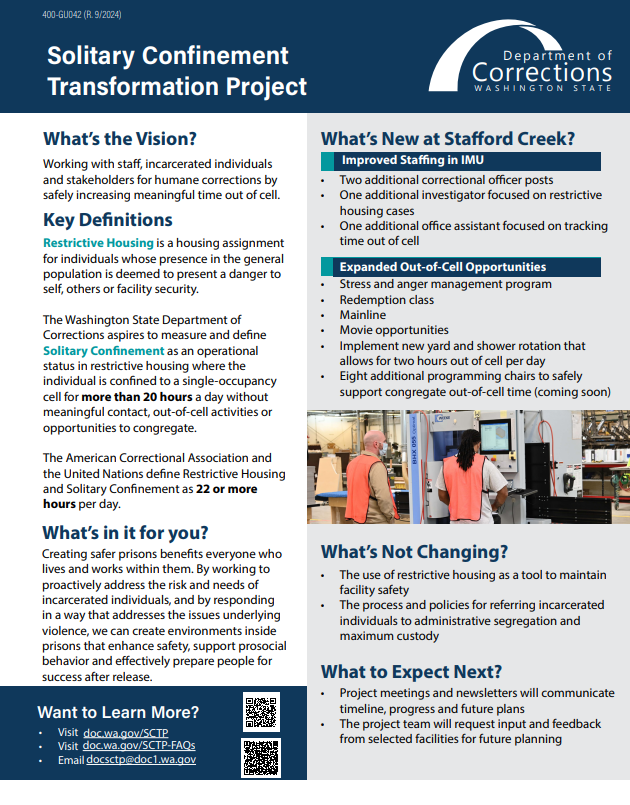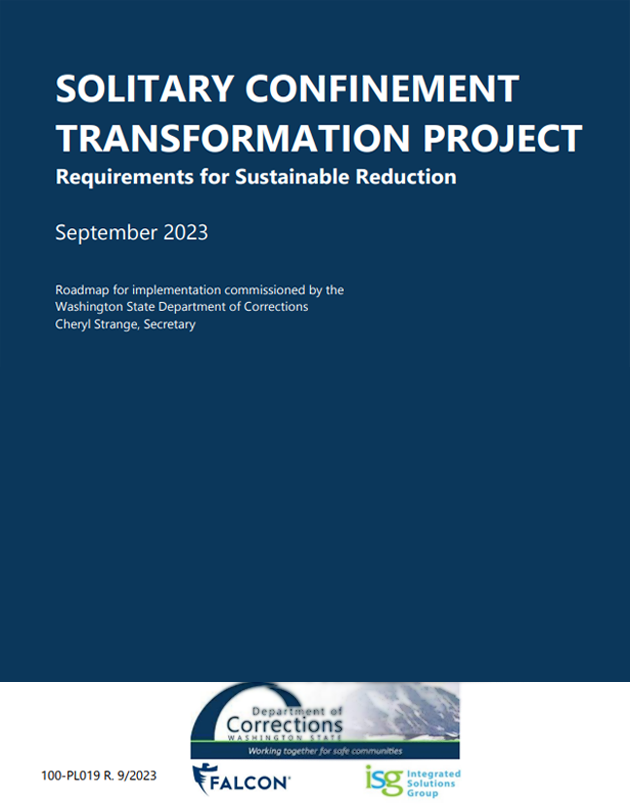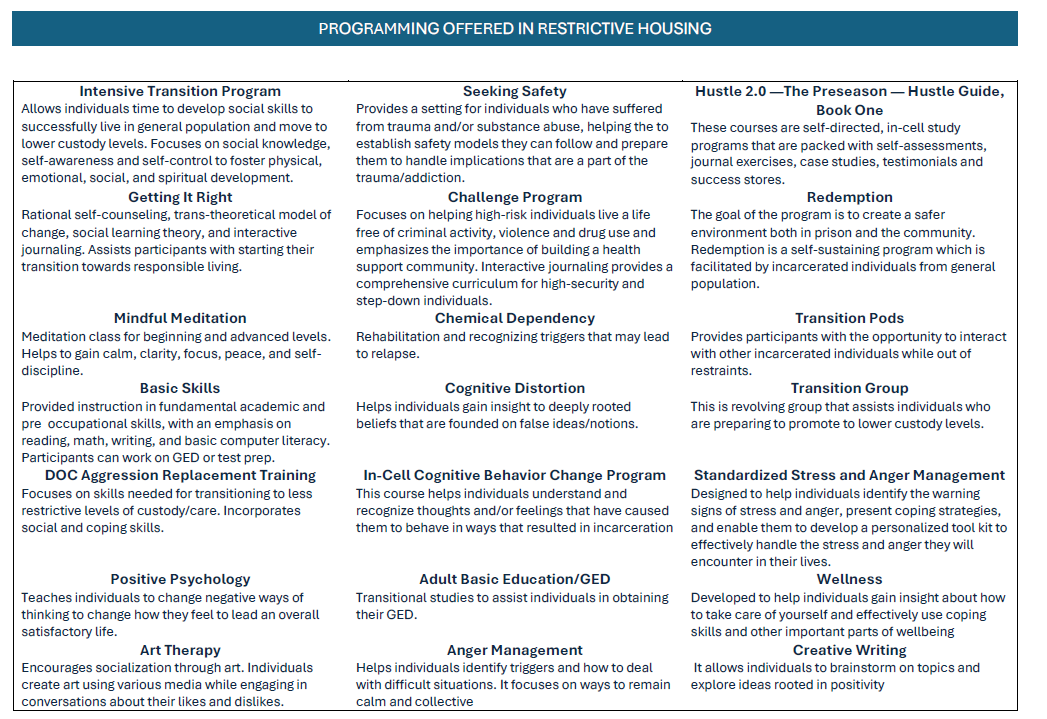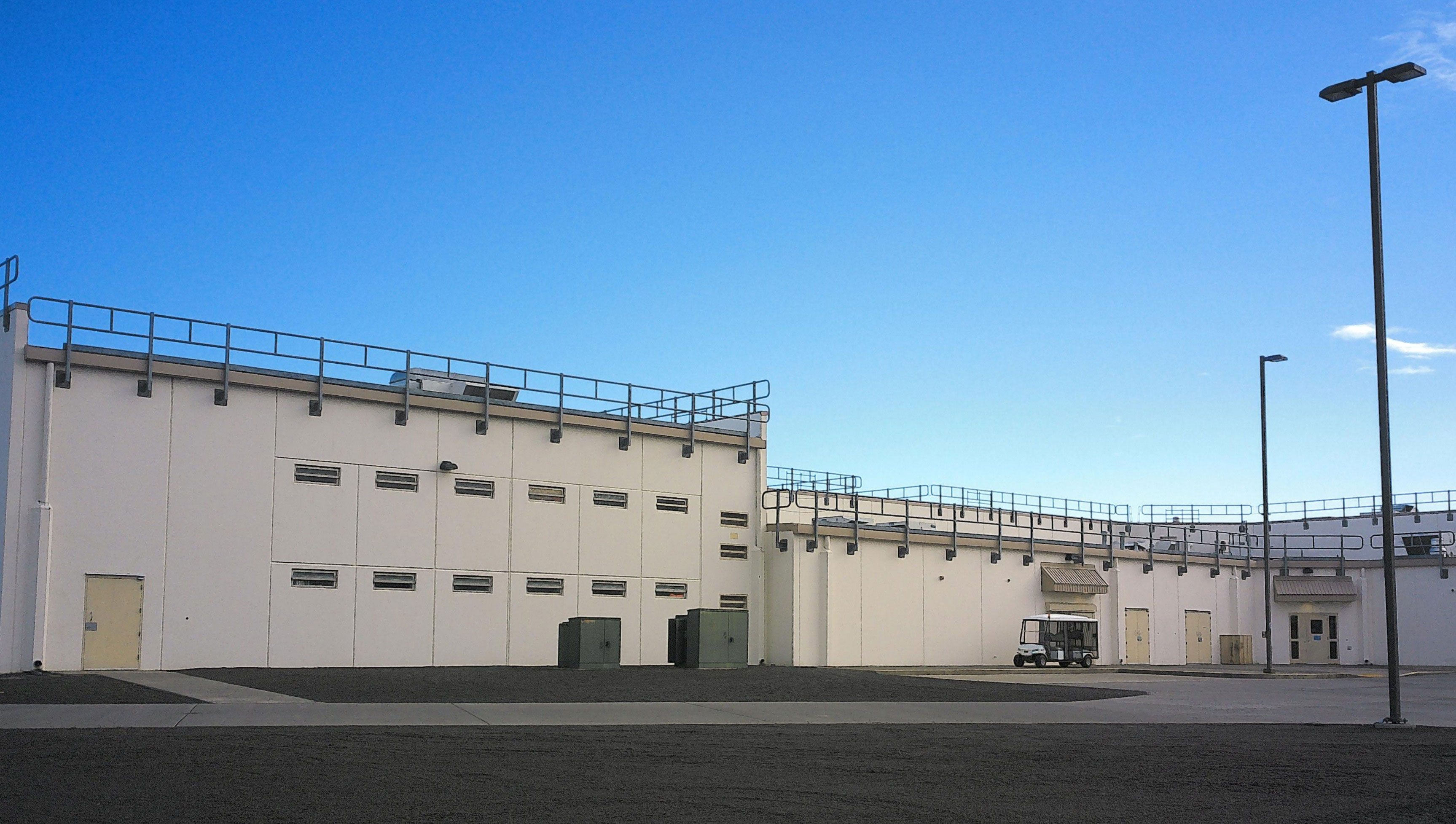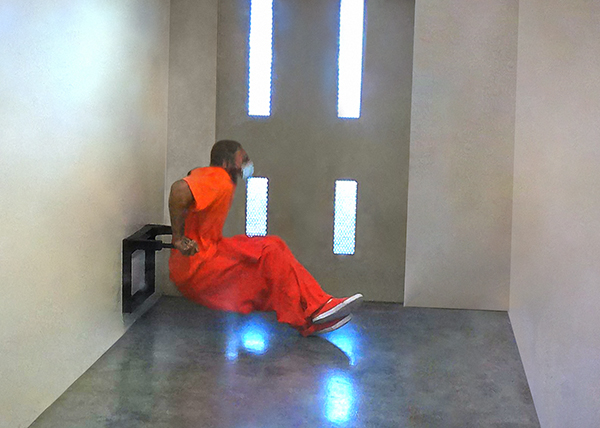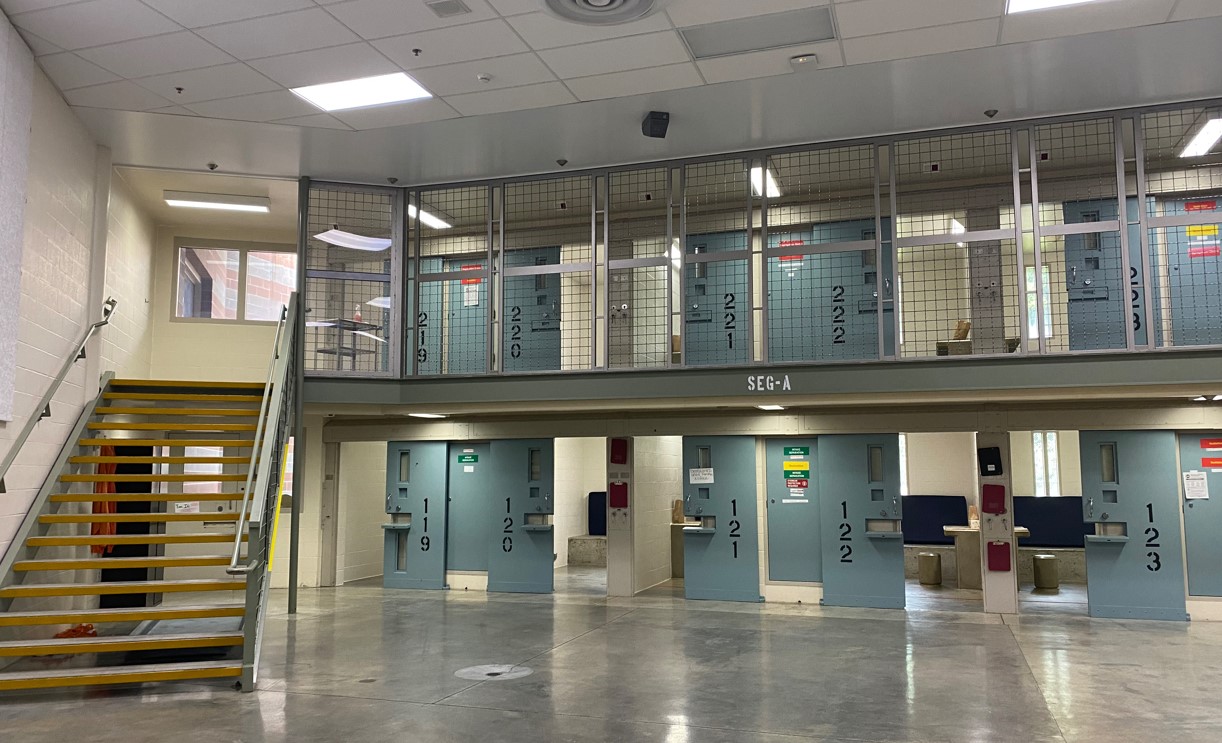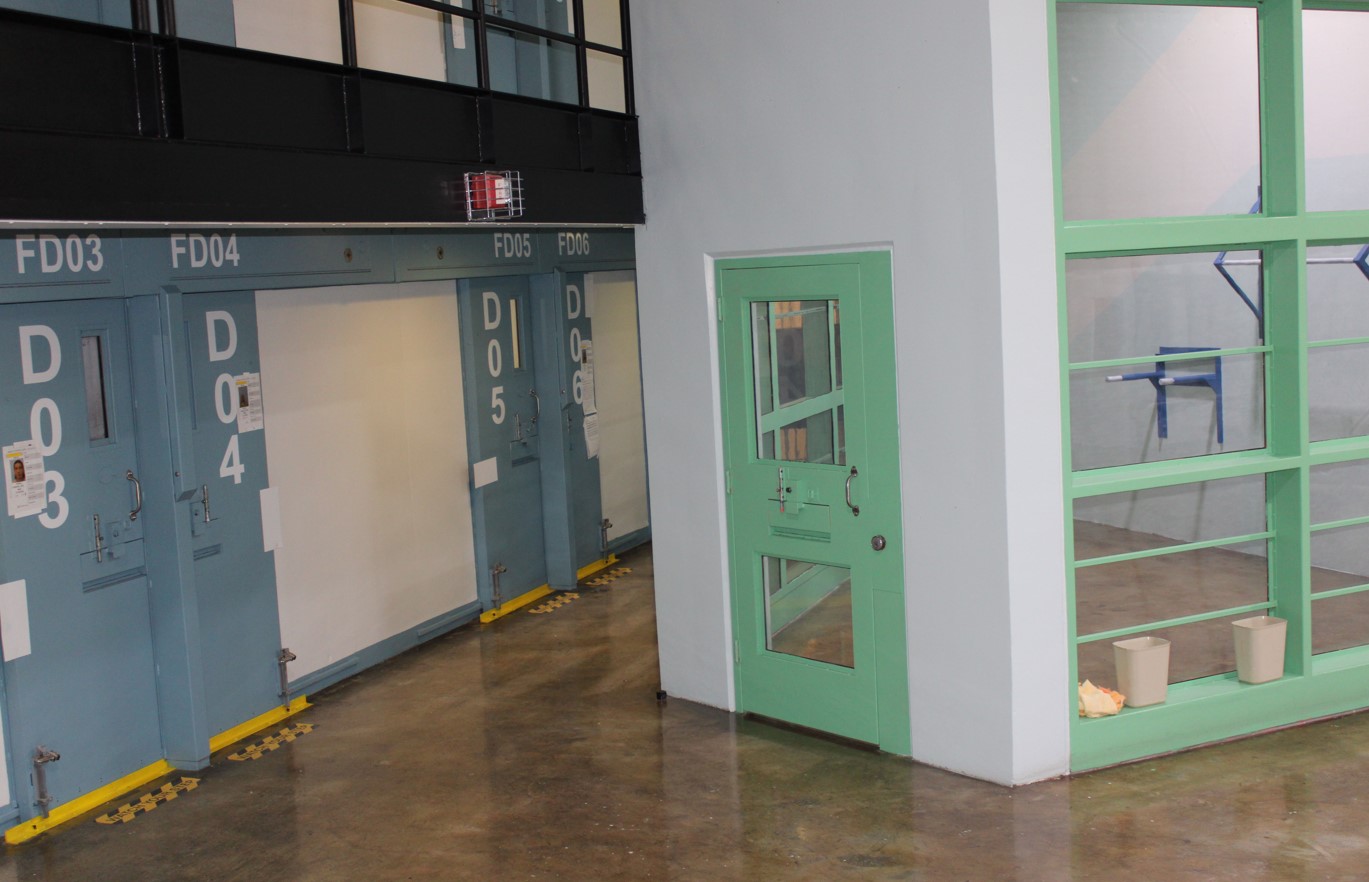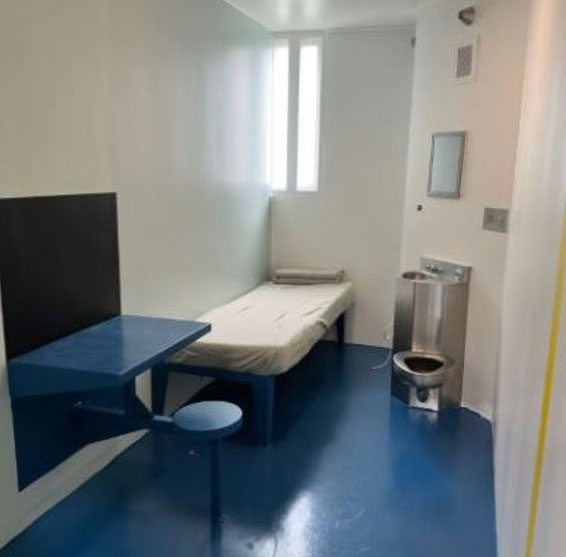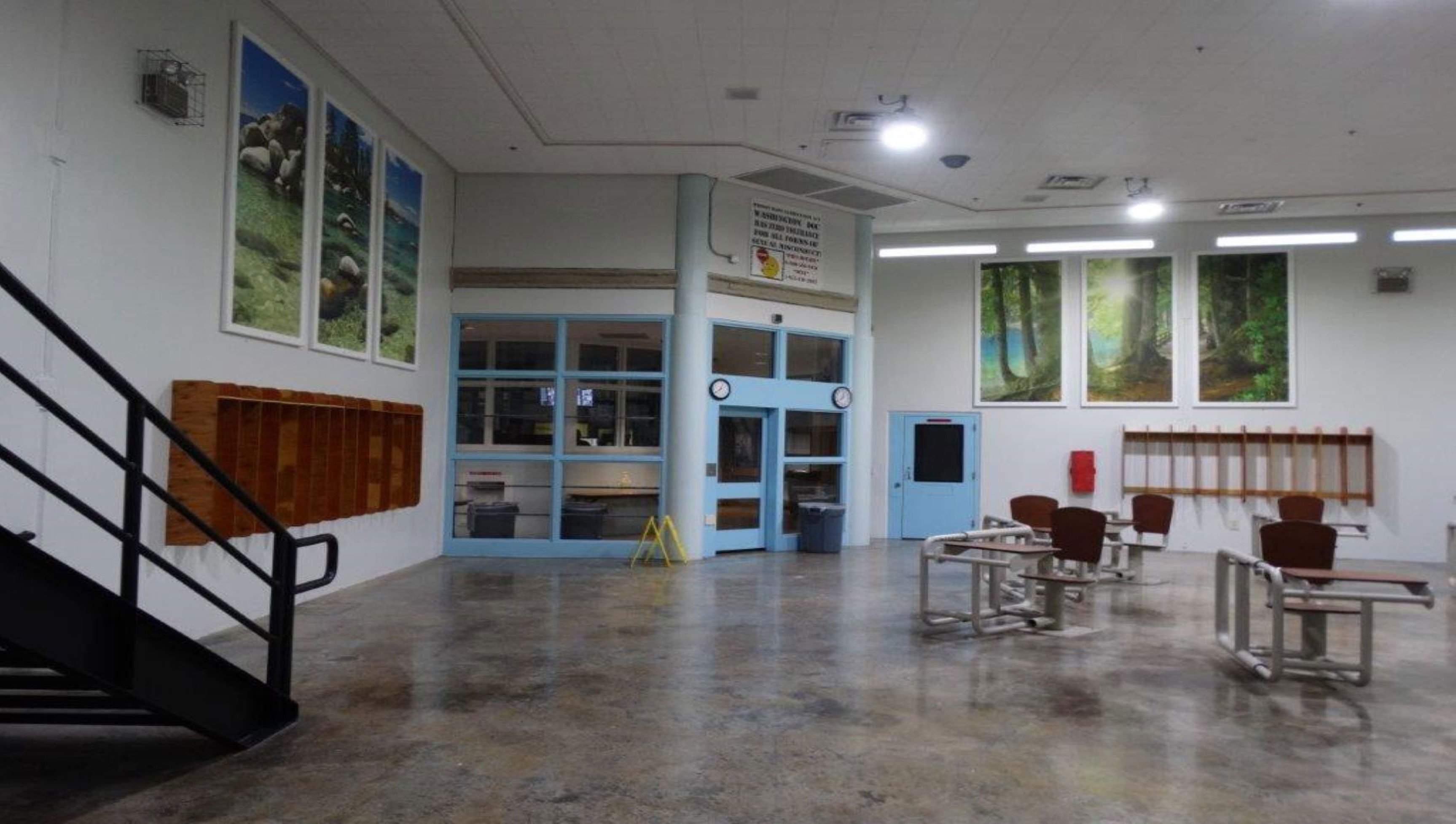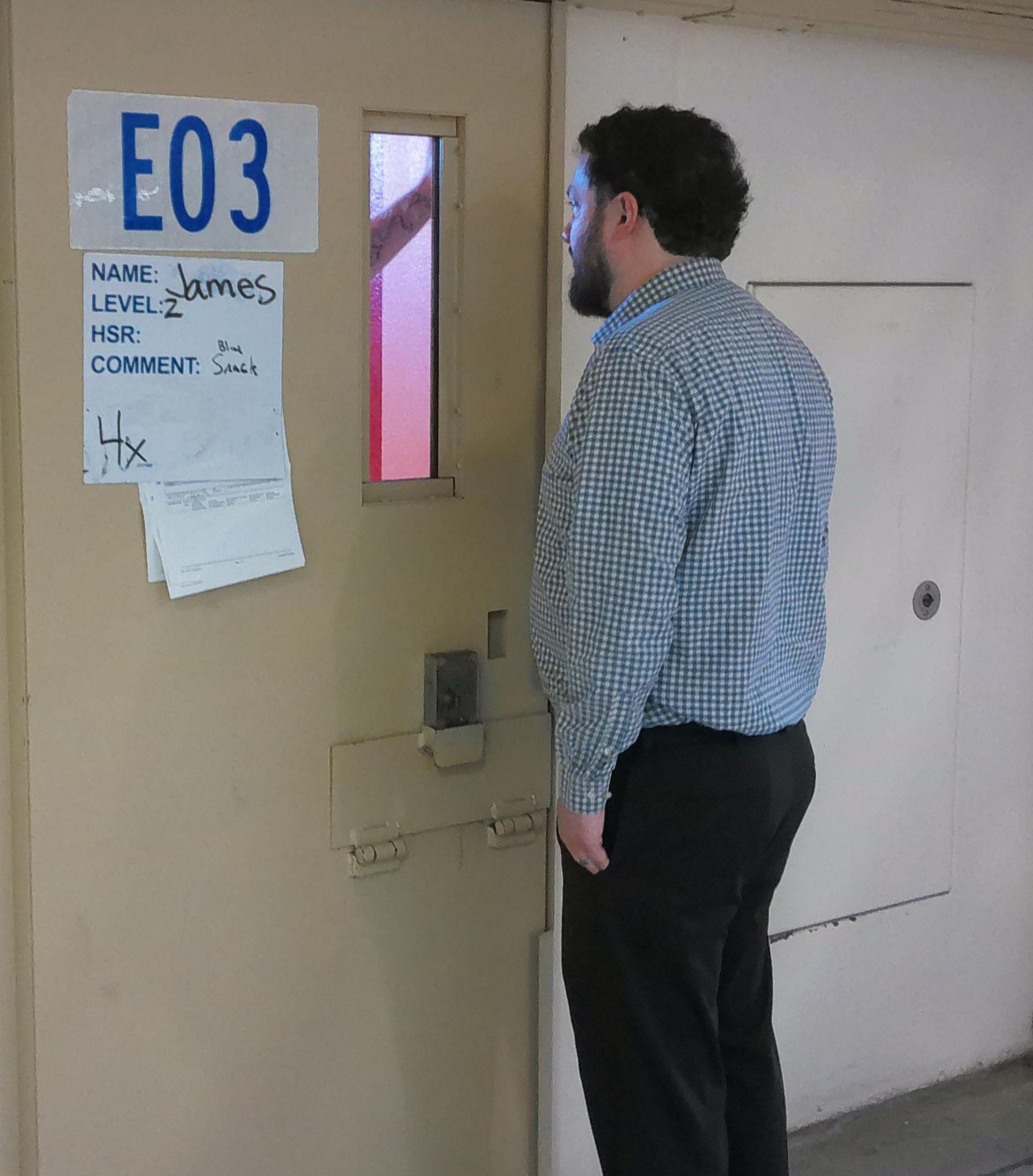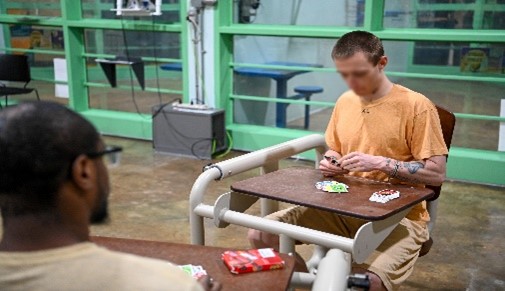About
The Washington State Department of Corrections (DOC) is a leader in prison reforms, supported by our use of innovative best practices in restrictive housing and solitary confinement. The department is actively engaged in continuous process improvements to maintain humane prisons and enhance safety for both staff and the incarcerated.
Key Terms:
Restrictive Housing
A housing assignment for incarcerated people whose presence in general population is deemed to present a danger to self, others, or facility security. Restrictive housing uses enhanced security buildings with single-occupancy cells to separate those individuals from the general population.
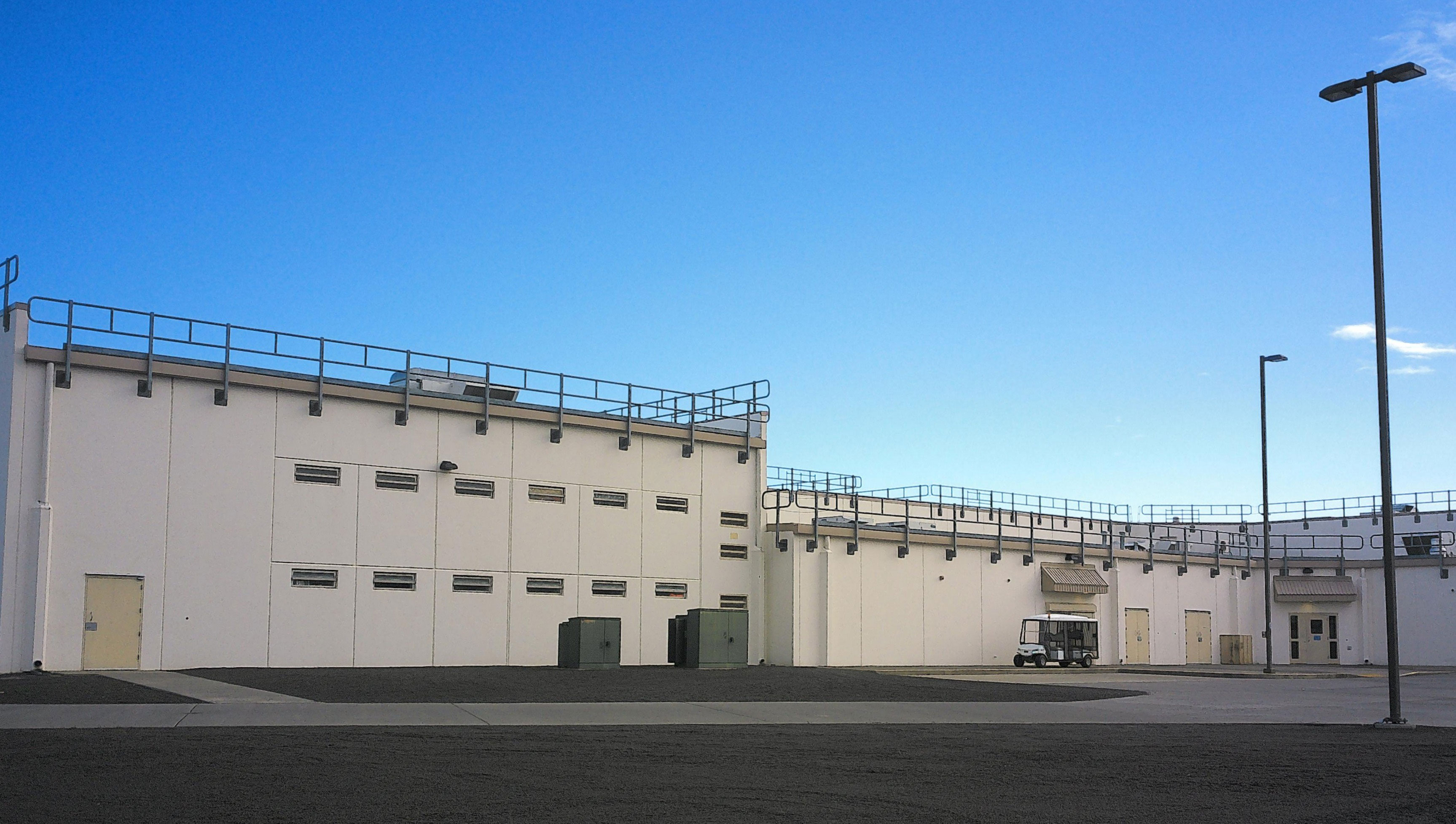
Enhanced security buildings. (Photo Courtesy of WSP staff) View Photo Gallery
Solitary Confinement
An operational status in restrictive housing where the individual is confined to a single-occupancy cell for more than 20 hours a day without meaningful human contact, out-of-cell activities, or opportunities to congregate.
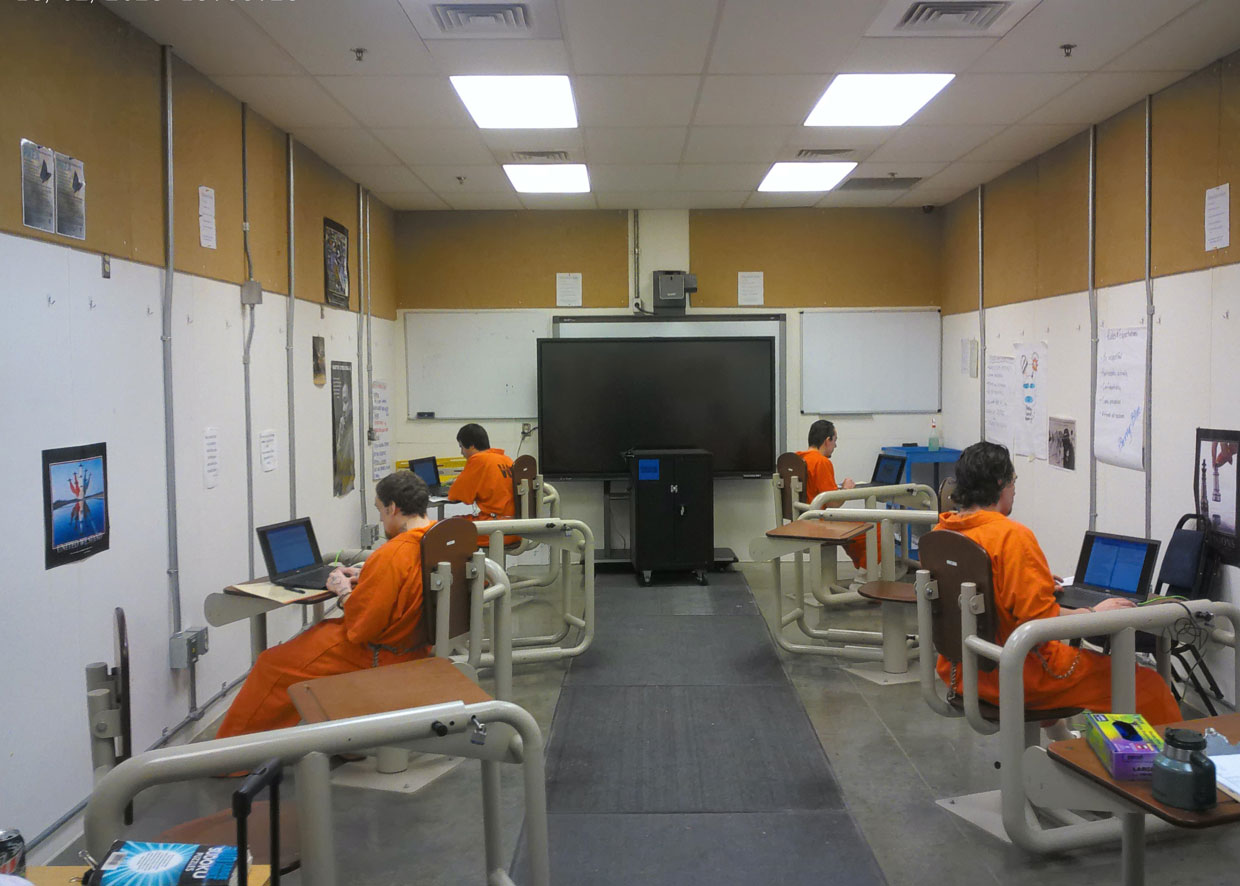
Education and behavioral programming out-of-cell opportunities. (Photo Courtesy of WSP Staff) View Photo Gallery
Historical Milestones & Advancement:
Over the years, DOC engaged in earnest and impactful efforts to shift internal policies and practices related to restrictive housing and solitary confinement.
Call to Action
DOC remains dedicated to safe and humane practices in these areas, however, recognizes there is still work to be done. To accomplish this change, DOC released an innovative Solitary Confinement Transformation Plan (SCTP).
Moving Forward
Department of Corrections (DOC) Secretary Cheryl Strange commissioned the SCTP roadmap for implementation and pledged to reduce the use of solitary confinement in Washington state prisons by 90% over the next five years - dependent on funding.
A team of DOC leadership and subject matter experts, joined by change management consultants, Integrated Solutions Group, and Falcon, a corrections industry expert group conducted workshops and visited prisons across the state to gather insight from both staff and the incarcerated about what is currently working and what is not in solitary confinement; this effort resulted in the development of a comprehensive plan to make that vision a reality.
The plan focuses on finding ways to provide four hours a day of meaningful out-of-cell time for incarcerated individuals in restrictive housing, or four times the current one hour a day they currently are given. The Solitary Confinement Transformation Project team says this can be achieved by:
- Improving staff training and staffing ratios with a focus on safety for everyone.
- Expanding access to programming in the general population, especially for those at risk of placement in restrictive housing.
- Enhancing the options and alternatives to solitary confinement.
- Increasing the efficiency of movement within the restrictive housing system.
- Providing more opportunities for out-of-cell time in restrictive housing areas.
DOC's ability to fully achieve solitary confinement reform is dependent on secured funding.
Project Publication Updates:
Programming
Programming efforts are prioritized to establish sustainable shifts in current practices; however, more work is needed. As part of this initiative, DOC is implementing a range of evidence-based and responsive programming tailored to individuals at high risk for placement in restrictive housing across all custody levels.
Data
DOC collects data related to restrictive housing and solitary confinement. This data collection helps identify areas for improvement and measure the impact of our initiatives. DOC publishes a quarterly report on the demographics, population, and length of stay regarding restrictive housing.
Recent Quarterly Reports
- Third Quarter 300-RE005
- Second Quarter 300-RE005
- First Quarter 300-RE005
- Fourth Quarter 300-RE005
Archived Quarterly Reports
Frequently Asked Questions
What is the Solitary Confinement Transformation Project (SCTP)?
The Solitary Confinement Transformation Project is an initiative envisioned and created by the Washington State Department of Corrections to reduce our use of solitary confinement by 90% over the next five years.
What is solitary confinement?
Solitary confinement is the security protocol in which an incarcerated individual is in a single-person cell for more than 20 hours per day- without meaningful human interaction, programming, or congregate opportunities. These conditions exist within restrictive housing areas such as Intensive Management Units (IMUs), Administrative Segregation (AdSeg) Units, Close Observation Areas (COAs), or other isolated settings within prisons.
What is restrictive housing?
Restrictive housing is the physical structure/unit in which individuals who pose a safety concern are housed, separated from the general population. Restrictive housing uses single occupancy cells to separate incarcerated individuals from the general population due to elevated safety and security concerns.
What is Administrative Segregation (Ad Seg)?
Administrative segregation is a temporary process to safely house an individual who poses a significant risk to the safety and security of staff, other individuals, a facility, requests protection or is deemed to require protection, is pending transfer to a more secure facility, poses a serious escape risk, or is pending investigation for behavior that represents a significant threat, which may include investigation from outside law enforcement agencies. Its purpose is to temporarily remove an individual from the general population until a timely and informed decision can be made about appropriate housing based on behavior and security.
What is the status of the SCTP?
The SCTP has made significant strides in 2024 through the Proof of Concept, or pilot initiative, launched in July at Stafford Creek Corrections Center (SCCC) IMU. This pilot project demonstrates targeted implementation of requirements from the SCTP Plan with the resources available. Key progress includes:
- Increase in Out-of-Cell Time: Average daily time out-of-cell in the SCCC IMU increased by 83% within 35 days of implementation in August 2024.
- Statewide Impact: The most restrictive solitary conditions (more than 2 hours out-of-cell daily) have decreased by 14% statewide since January 2023.
Does this project mean that everyone in solitary confinement is moving into general population?
No. Reducing the use of solitary confinement by 90% does not change the housing assignment for individuals who pose a serious threat to others or the safety and security of the facility.
How are we going to accomplish more out-of-cell time without more staff?
Staffing levels that ensure the safety of staff and incarcerated individuals remain a top priority for the SCTP initiative. Secretary Strange has emphasized sufficient staffing resources are essential, and legislative support is required to sustain this transformation. We have already made significant progress in addressing staffing needs, including:
- Custody Positions: Multiple additional positions to facilitate increased movement and out-of-cell activities.
- Support Roles: One Office Assistant dedicated to data tracking and reporting.
- Specialized Staff:
- Investigator to expedite investigations and improve restrictive housing transitions.
- Psych Associate dedicated to Restrictive Housing mental health needs.
- Psych Associate assigned to support Washington Way Resource Team participants.
- Psychologist contractor hired to further bolster mental health services.
These staffing enhancements are essential for maintaining safety, providing mental health support, and ensuring the initiative's success.
Some incarcerated individuals repeatedly return to restrictive housing. What are the intervention strategies planned to reduce future placement in restrictive housing for these individuals?
As part of this initiative, DOC will conduct clinical risk assessments through all custody levels and implement responsive evidence-based programming and Cognitive Behavioral Interventions for those at high risk for placement in restrictive housing. Creating alternatives to Administrative Segregation will reduce the incidence of placement in restrictive housing, and lower the number of those housed under the conditions of solitary confinement
What if an incarcerated individual refuses to come out of their cell?
Unless an individual is deemed too dangerous, all incarcerated people will have time out-of-cell scheduled and offered; an incarcerated may refuse time out-of-cell, though it will be encouraged and all time out or refused is documented. Opportunities for out-of-cell time will continue to be offered, regardless or refusal or amount of time in restrictive housing.
When does more out-of-cell time start, and is it a phased approach?
Some of these initiatives are already under way at some facilities, while others will require additional funding for staff, programs and additional space for recreation and programming. As legislative appropriations are received, DOC will expand its resources and systematically offer more out-of-cell time as it becomes possible.
How does this benefit staff?
Prisons are an inherently dangerous environment, and restrictive housing is one of the most intense, high-stress and challenging places to work within prisons. Shifting the prison culture in a way that blends rehabilitative practices for individuals, greater positive interactions with staff and lower violence has been shown to create a safer, more positive working environment. DOC recognizes that existing research reveals the average life expectancy for correctional officers is only 59 years of age. By implementing the Washington Way initiative, the agency is committed to creating a healthier work environment for our staff, more positive interactions with incarcerated individuals, and a better overall work-life balance by reducing the life stressors our staff experience.
Why are we doing this, anyway?
Solitary confinement has the potential to cause long-lasting harm to some incarcerated individuals. While it can be an effective way to prevent violence, spending prolonged periods under these conditions can have devastating effects on an individual's mental and physical health, long after they leave our facilities. In other states under legislative mandates requiring elimination of solitary confinement, the result has been an immediate and significant increase in violence against staff and other incarcerated individuals, creating an environment profoundly detrimental to the safety and security of the entire prison community. The agency is committed to internally developing a proactive approach and providing more safe and humane prison system for all.
When does more out-of-cell time start, and is it a phased approach?
Some of these initiatives are already under way at certain facilities, while others will require additional funding for staff, programs and new spaces for recreation and programming. Over the next five years, as legislative appropriations are received, DOC will expand its resources and systematically offer more out-of-cell time as it becomes possible. By the end of the five-year period, all in restrictive housing units will have the ability to offer at least four hours out-of-cell for all incarcerated individuals.
Which populations are counted in the 90%? Is it just those in restrictive housing, or those in other areas under the conditions of solitary confinement too?
Solitary confinement protocols only exist within restrictive housing units. Medical units and COAs are examples of settings that might not typically be considered restrictive housing, but where solitary confinement protocols may apply. In those areas, individuals will continue to be tracked and reported for transparency.
Does SCTP change access to visiting, mail or phone calls between the incarcerated and their families and loved ones?
The SCTP does not impose additional restrictions on communication or visitation. In fact, visitation hours in SCCC's and WSP's IMU have been updated to mirror regular visitation schedules, increasing access for families and loved ones.
What programming is going to be offered?
As part of this initiative, the DOC is implementing a range of evidence-based and responsive programming tailored to individuals at high risk for placement in restrictive housing across all custody levels. Recent progress made at SCCC includes F.A.S.T. (Fun Activities and Social Time) which offers regular opportunities for engagement and meaningful out-of-cell time. F.A.S.T. and congregate meals and programs such as Stress and Anger Management are delivered out-of-cell to support personal growth and encourage social interaction.
Where can I find more information on the Solitary Confinement Transformation Project?
Please visit Solitary Confinement Transformation Project Plan to view the entire plan. You may also email questions to DOC Solitary Confinement Transformation Project.
Resources
Policies
Below are Department of Corrections (DOC) policies that apply to Restrictive Housing.
- DOC 320.200 Administrative Segregation
- DOC 320.250 Maximum Custody Placement/Transfer/Release
- DOC 320.255 Restrictive Housing
- DOC 320.260 Secured Housing Units
Laws & Regulations
- WAC 137-28 Discipline-Prisons
- WAC 137-32 Prisons - Administrative Segregation and Intensive Management
Publications & Job Aids
Publications
- Elimination of Disciplinary Segregation 300-GU001
- Restrictive Housing Data Report 300-RE005
- Restrictive Housing Fact Sheet 400-FS004
- Restrictive Housing Placement - Mitigation of Risk Flow Chart 300-IG002
- Solitary Confinement Transformation Plan - FY2024 Supplemental Budget 200-GU024
- Solitary Confinement Transformation Project 100-PL019
- Solitary Confinement Transformation Project Placemat 400-GU042
- Solitary Confinement Transformation Project Briefing Update 400-GU050
- Solitary Confinement Transformation Project Interim Report 400-GU051
- Solitary Confinement Transformation Project Investment Timeline 200-GU027
Resource Links
- How Norway's Prisons Are Different from America's
- PRESS RELEASE: DOC Takes Next Step Towards Reducing the Use of Solitary Confinement
- Solitary Confinement Transformation Project - Frequently Asked Questions
- University of California Irvine: Reducing Restrictive Housing in Washington State

